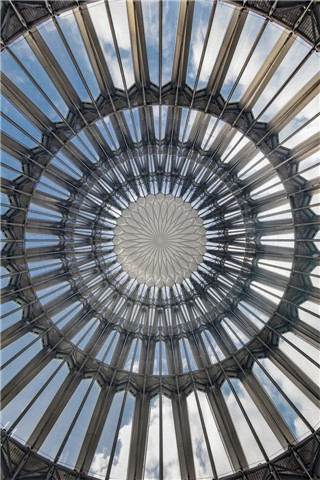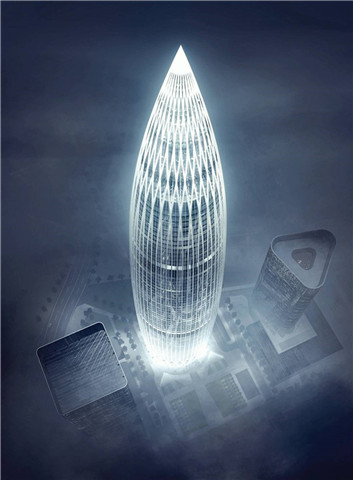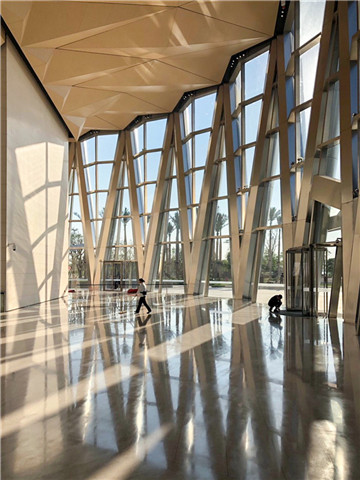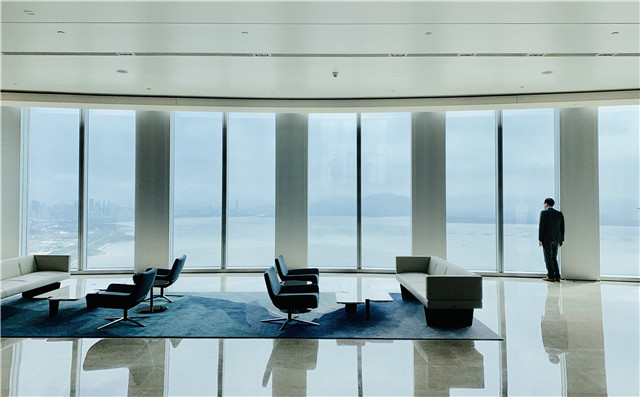
How does spring bamboo shoot as the conceptual image of the design firstly come to your mind? Is there any story behind to share with us?
New construction in Shenzhen has been rapidly expanding to east and west of its city center in the past few decades. As the city expands horizontally, at some critical junctures such as the China Resources Headquarters site, a tall tower becomes beneficial to draw people, sustain a good level of urban density and to function as a vertical marker.
Spring bamboo shoot became a great source of inspiration as it is fast growing, self-generating and considered a very sustainable crop. Its geometry is also very powerful; its pure and absolute circular plan, graceful curving section, all helping to redefine and remind the audience of China Resources’ history, culture and value.

What is the biggest challenge during the design and construction, and what is the biggest innovation in China Resources Tower project?
The overall mass of China Resources Tower is defined by 56 exterior columns with diagrids at the bottom and converging to a point at the top. This structural solution is more fitting to the form of tower and more efficient than the mega column system. The exterior frames are fabricated offsite in three-storey module, making the construction time and cost effective. It is the first time the tube-in-tube external column structural system is realized in a supertall tower in a seismic zone in mainland China. Looking into the interior, the eccentric column beam connection helps to offer an uninterrupted column free space. The idea of providing an open space is highlighted at the 40.5-meter-tall sky hall where a lightweight space frame structure is introduced.

What kind of idea does KPF want to convey to the public through the unique profile of China Resources Tower?
The tower possesses both simplicity in its overall geometry and complexity in its details. The tower has been created with a pure circle in the bottom to a point atop and a graceful arc in the vertical section. Its absolute form and perfect geometry is archetypal of China Resources value and philosophy. It is pure but not dull, it is highly detailed but not confusing and it is monumental but not overwhelming. The level of perfection in tower’s smallest details such as the external column cladding is also a great tool to demonstrate China Resources attention to establishing a firm foundation with smaller parts and maximizing satisfactions of all user groups.
How does the design of China Resources Tower combine and merge the local culture and nature landscape?
One of unique features in the tower is the fact that its overall form, its structure and its facade are all in one. The design process has been similar to that of traditional Chinese stone or wood carving art. Not only they are beautiful cultural artifacts but also such technique helps to demonstrate a great sense of lightness, permeability and craftsmanship. Shaping of the overall massing came first, sculpting away everything but the structure came next and detailing the leftover structure came at the end.
Tower’s graceful curving form is also a reflection of the sweeping shoreline of Shenzhen Bay. Its profile and expressive structural system also work as an ensemble with the Shenzhen Bay Sports Center, as a pair of vertical and horizontal building. The stainless steel exterior column cladding makes the tower shimmer, making the entire tower appear like a white lighthouse by an ocean edge.
In terms of the design, what is the differences and connections between China Resources Tower and other KPF supertalls?

Shenzhen has been a significant platform for KPF to make great urban neighborhoods. Even within the same city, different districts with their own characteristics and different clients would call for an unique design solution. For example,both China Resources Tower and Ping An Finance Center are highly symmetrical, taper to a point and cladded in combination of glass and stainless steel. However, PAFC reflects the characteristics of CBD where China Resources Tower reflects the characteristics of the younger neighborhood right adjacent to Shenzhen Bay. The two towers nonetheless engage into an interesting visual dialogue: creating a macro urban gate and symbolizing its contextual conditions to each other.

What is your perception about how does the Oriental philosophy & Art & Aesthetic reconcile and coexist with western modern architectural design concept in China Resources Tower?
More than the visual parts, it is the familiarity of users occupying the space. It is about sensibility of space, thread of thresholds and ways people meet and work. The idea of Chinese axial procession has been an essential tool for the site planning. One enters the tower lobby walking through a forecourt planned facing Mix C Mall to the north, a ceremonial glass bridge spanning over the sunken plaza and finally, under a triangular portal entrance. The lobby is then open to the south facing the greenbelt leading one to the bay.

Another Chinese concept, round sky and square earth, is reflected on the tower planning. The tower is perceived as the meeting of the two where the center core is defined by a 30-meter by 30-meter square and the tower enclosure by a 60-meter diameter circle. Such concept has been used in Temple of Heaven in Beijing, Shanghai Museum and even in Chinese ancient coins.
In recent years, China had built many supertall towers, ranking the top of the height, how do you perceive the China enterprises’ enthusiasm and pursuing on Super Tall?
Well-designed skyscrapers in right locations can benefit both enterprises and cities. “Right locations” are defined by availability of public transportations, existing or planned urban density and skyline around the site. They become an instant landmark which helps to improve the identity and demonstrates signs of greatness. Highly identifiable and memorable structures will likely become destinations and will help to improve the land value surrounding it. They are also extremely impactful in modernizing cities’ skyline which then allows viewers to have positive visual enrichment. Being directly linked to the public transportation system just like the China Resources Headquarters tower, tall towers can also help to make the city more sustainable.

